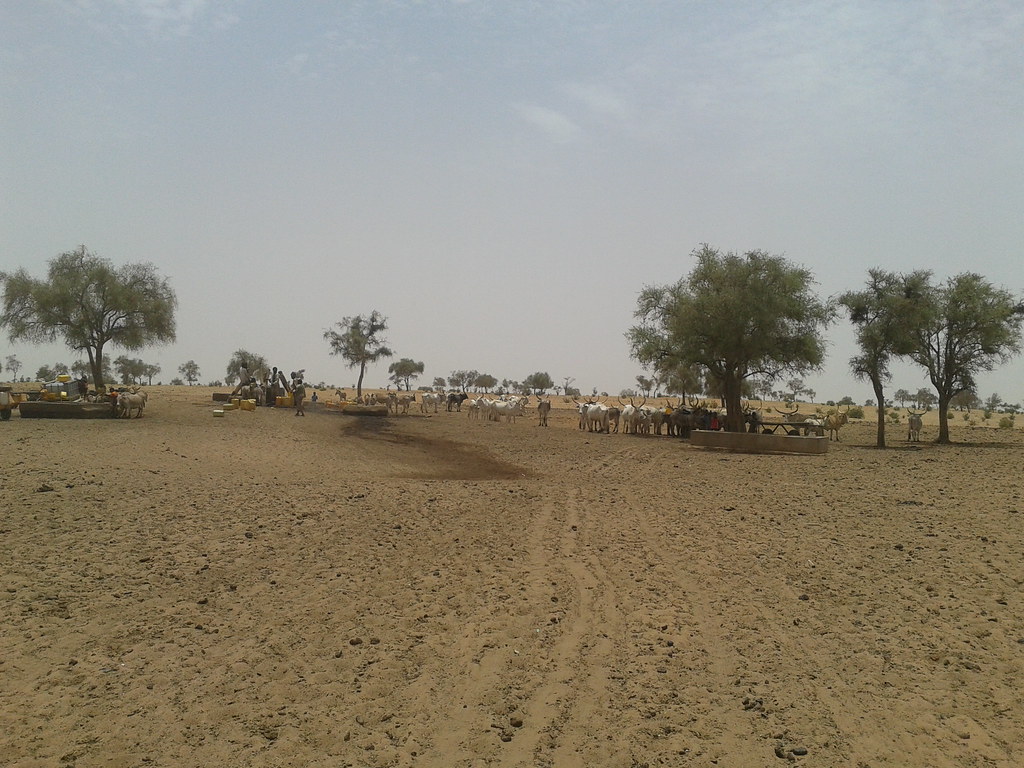
Peul herders pump water from a well for their cow herd and families, Niassante Rural Community, Saint Louis Région, Senegal (photo credit: ILRI/Jo Cadilhon).
This article was written by Helen Mountfort, Consortium Co-ordinator for Pathways to Resilience in Semi-Arid Economies (PRISE)
Building economic resilience in semi-arid regions: what role for the sustainable development goals?
As the world adopts the sustainable development goals (SDGs) to help drive the implementation of sustainable development, it is imperative that these must do more to consider how economic resilience can be built in semi-arid regions.
Semi-arid regions are among the areas that have been identified by the Intergovernmental Panel on Climate Change (IPCC) as being particularly exposed and vulnerable to the impacts of climate change. Home to over 2.5billion people, highly variable arid and semi-arid systems are already affected by climate change, and will increasingly struggle to support the people who depend on them unless we can find ways to harness the resilience that is inherent to many of these systems.
The SDGs must consider several major challenges, for inclusive consideration of sustainable development
Semi-arid lands in developing countries tend to face slow growth rates, poor infrastructure, narrow economic activities and poor access to markets. This often results in high levels of extreme poverty. If the post-2015 Sustainable Development Goals (SDGs) want to leave no one behind, they must pay special attention to people living in these difficult places – those blighted with the triple whammy of climate change impacts, slow growth and high poverty levels.
Development progress in these hotspots will require a long-term focus on resilient economic growth, a story that is underrepresented in existing post-2015 development debates.
Pathways to Resilience in Semi-Arid Economies (PRISE) is a new five-year research project focused on addressing how semi-arid regions can grow in a quick, inclusive and resilient way. Supported by the Collaborative Adaptation Research Initiative in Africa and Asia (CARIAA), PRISE considers barriers to growth, and the type of growth needed to generate greater resilience to the impacts of climate change. Three strands have emerged from the early stages of PRISE research.
Read more on the original blog here
